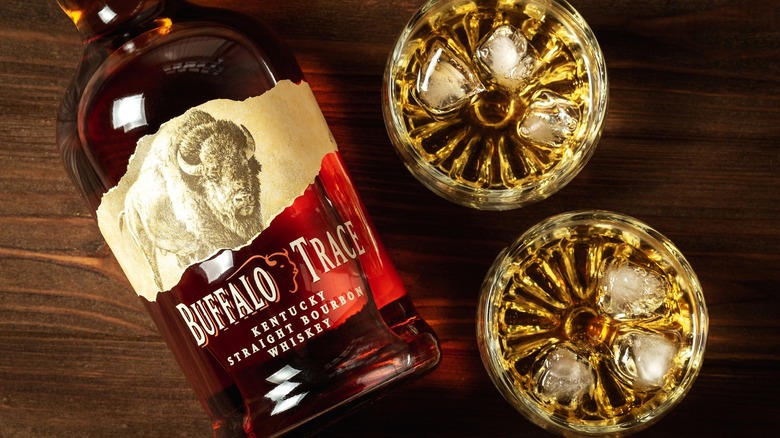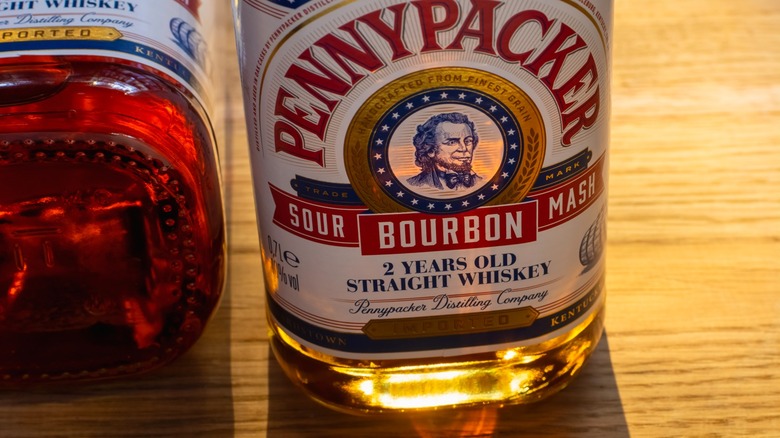Bourbon Vs Straight Bourbon: What's The Difference?
Seasoned connoisseurs can typically tell different whiskeys apart with ease, but for the rest of us, the task can be daunting. While they all bear charming characteristics and subtle personalities that make them unique, they also share many similarities. It gets even more challenging when attempting to identify the difference between spirits within their sub-profiles, like comparing bourbon to straight bourbon. Although some might say that the differences between the two brown liquors are negligible, they do exist, and it all comes down to how they have been aged.
For a spirit to be labeled bourbon, it has to adhere to specific requirements defined under federal law that ensure it is worthy of its name. To start, the liquor has to contain at least 51% corn in its mash, which affords the spirit its sweeter profile compared with other whiskeys. It must also age in charred oak barrels that are brand new when the aging process begins to impart the smoky flavor bourbon lovers long for in a tasting.
However, unlike some other types of whiskey, bourbon does not need to be aged for a set amount of time. Yet, for a liquor to be considered a straight bourbon, the law demands that it must be aged at least two years. That might seem confusing, but it all comes down to whiskey age statements and precisely when they are required.
How age determines the difference between bourbons
One of the differences between Scotch and bourbon is that the former has to be aged for at least three years to be compliant with the Scotch Whisky Regulations of 2009. America's claim to whiskey fame is held under no such constraints – with the exception of straight bourbon, that is. However, if it has been aged less than four years, it must display a label on the bottle telling consumers how much time it spent in charred oak barrels. That means a bourbon whiskey with no age statement on the bottle is technically a straight bourbon.
It is generally accepted that for Kentucky's finest to reach its best potential, it should spend at least four years taking on flavors from the barrels it ages in. Straight bourbon doesn't have to mature this long, but if it hasn't, there will be a label on the bottle to clue you in to how close it got to that milestone. If you are searching for a straight bourbon the next time you find yourself browsing the liquor store shelves, look to the label (or lack thereof) to tell the difference between what you are looking for and younger spirits that may not possess as many subtle, palate-pleasing flavors.

